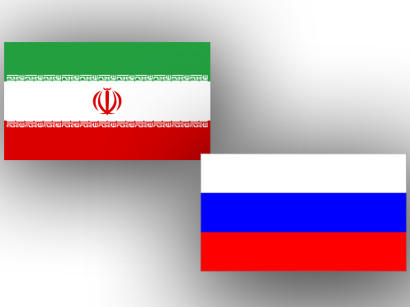What is behind Iran-Russia weak trade ties?

By Azer Ahmadbayli / Trend
Before the nuclear agreement was concluded and while the talks with the future signatories were under way, Iran’s trade balance with different partners was affected by a number of artificial factors.
The whole picture of Iranian trade ties was twisted out of shape by sanctions posed on the country. For example, restriction of the EU trade ties with Iran forced the latter to turn towards China and India.
Since the sanctions were lifted in 2015, the pre-existing natural equilibrium and broken trade links began to restore. Growing turnover between Iran and the EU is a clear illustration of that.
The EU has already conquered the third position among top trade partners of Iran.
But just as then and still now, Russia wasn’t on the list of leading trade partners of the Islamic Republic despite the fact that both countries have been closest neighbors sharing borders across the Caspian Sea.
For better contrast, let’s emphasize that the neighboring Emirates, Iraq and Turkey are among the top trade partners of Iran. Is there nothing to offer each other?
If you compare the balance of trade - one of the most important macroeconomic indicators - between Iran and its several economic partners, including Russia, it would look like this: within the first seven months of current Iranian fiscal year (March 20 – October 22, 2017), total non-oil trade with China made $11.84 billion, with UAE - $8.15 billion, with EU - $6.41 billion, with South Korea – nearly $4.3 billion, with Turkey – $3 billion USD (sources: TPOI, Iran’s Customs administration).
Poor figure of about $0.7 billion, showing the Iran-Russia total non-oil trade for the same period, can hardly be compared with those shown above.
Trade between the Islamic Republic and Russia has always left much to be desired. Low trade turnover indicators have remained as such for five, ten and fifteen years already. To be fair, it is necessary to note that Russia’s exports to Iran were always far bigger than that from Iran to Russia.
Iran’s northern neighbor is a giant state with colossal potential and resources. Iran itself has also much to offer.
Why have both countries been so unwilling to rectify the long lasted situation? There must be reasons.
- Iranians still remember historic experience of relationship with Russia, where they always lost: two Russian-Persian wars in early 19 century where Iran lost a significant part of its territory, occupation of Iran by Soviet and British military forces during the WW2, attempts of seizure South Azerbaijan and support of separatist sentiments of Iranian Kurds, military support for Iraq in the Iran-Iraq war, support of sanctions against Iran in the UN Security Council 2006-2010 etc. Based on those and some other historic events, a deep sense of mistrust is living in the minds of many Iranians creating a negative image of Russia.
- Lack of public relations and weak ties between the two countries’ business circles. Almost all economic agreements and contracts are usually concluded at the governmental level. Neither Iranian nor Russian society doesn’t show any interest in discovering the neighboring country through tourism, language learning, social media, etc.
- The better Russian relations with the West and the US in particular, and, of course, with Israel, the more strained the relationship with Iran becomes.
- As the rest of the world, ordinary Iranians prefer European goods to Russian ones (Mercedes vs. Russian Lada). Western technologies, as opposed to Russian ones, are of top priority. The recent examples – large contracts with Airbus, Total and Renault.
- The relations between Russia and Iran have not been long-stable and used to be characterized by periodical ups and downs due to lack of a single and clearly defined ground and coherent strategy.
---
Follow us on Twitter @AzerNewsAz
